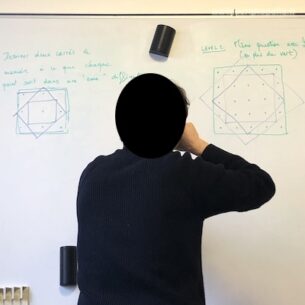Broadening the field of reflexivity
One of the key features of our times seems to be a certain kind of reflexivity. Not our capacity to mentally examine our own actions ex-post (we have been able to do that for a long time), but the ability we have now to look at the things we participate in differently, to have information about them right before our eyes. Think about air quality, the covering distance your car estimates with the remaining gas in its tank, your website real-time statistics, the number of characters — spaces included — of the text you are writing, the charge amount of your laptop battery. Data, traces, measures: many means to inform you, to empower you, some say. Because you know now. Therefore you can decide, you can chose. Except when you cannot. In an airplane, for instance, one could wonder whether displaying the plane distance to the ground, its position above the ocean, its speed, is really a good idea. That day, while we were looking, on the screen in front of our seat, at the strange loop our plane just did, waiting to land on JFK, we joked, secretly hoping that nothing went wrong. But since the tragic Rio-Paris crash, I have kept wondering: what was on their screens?







